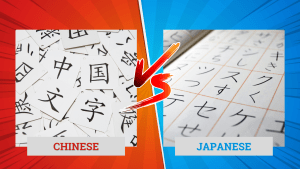As the island nation of Taiwan positions itself in the international marketplace, understanding the trends in Taiwan’s English usage is crucial for businesses and individuals alike.
As part of our series on the languages of Tawain, this article will delve into the nuances of English usage in Taiwan by exploring the interconnectedness of language and business. By examining the historical context, current statistics on English fluency, and the implications for Taiwanese industries, we aim to provide a comprehensive overview of how English shapes the professional landscape in Taiwan in 2025.
Historical Overview of English in Taiwan
Taiwan’s relationship with the English language has a rich historical backdrop, which has evolved significantly, reflecting broader societal changes and economic aspirations.
Early Language Policies (17th Century to 20th Century)
Language documentation in Taiwan was sparse before the 17th century. Historically, Taiwan’s language education policies have been shaped by various political regimes: European colonization, the Qing Dynasty, Japanese colonization, and the Kuomintang (KMT) Nationalist government.
European colonization, particularly by the Dutch and Spanish, had limited long-term impacts on language policies. However, the Dutch did encourage the use of Sinkang, a Romanized script for a local aboriginal language, as part of their Christianization efforts. This marked a significant early attempt to influence language development on the island.
Language Policies Since the End of World War II
Since the end of World War II, Taiwan has experienced a transformative journey toward English proficiency. The Taiwanese Ministry of Education recognized the strategic importance of English for internationalization and economic competitiveness, thus integrating it into the school curriculum to enhance Taiwan’s global stature.
Over the years, Taiwanese English (TE) has evolved into a unique dialect predominantly influenced by American English. This is a result of the historical and political relationship between Taiwan and the United States, distinguishing it from many Asian countries, where British English often serves as the standard.
Evolution of English Language Teaching Approaches (2000-Present)
Starting in 2001, Taiwan’s K-12 English curriculum aimed to enhance communicative skills, foster motivation, and promote global cultures. English education became compulsory in primary education, although many Taiwanese children started learning English in preschools due to parental aspirations.
The proliferation of cram schools, or buxibans, paralleled trends across East Asia, bolstering students’ English proficiency. Despite a perceived decline in the institutional role of English post-1997, its importance has surged among professionals, signifying a shift towards a bilingual environment.
The 2030 Bilingual Nation Development Goal
The Taiwanese government’s ambitious 2030 Bilingual Nation initiative seeks to establish Taiwan as a bilingual English-Mandarin country. This strategic blueprint aims to enhance Taiwan’s business communication and global competitiveness. Key elements include hiring more English teachers and integrating English across school subjects, with early English education starting in Year 1 in some regions.
Tertiary students must meet certain English proficiency standards as part of graduation requirements. The government has allocated approximately NT$30 billion (US$982 million) towards achieving these objectives. Crucially, observers note the importance of creating more English-speaking environments to embed English into Taiwan’s business and cultural fabric.
How Common is it to Speak English in Taiwan?
English, while not an official language, plays a significant role in Taiwan, spoken as a second language by about 28.5% of the population. English proficiency is often linked to increased socioeconomic status, offering individuals better job opportunities.
In industry, English prevails in sectors such as advertising and media. Whilst Chinese Mandarin remains the primary language, English can often feature in Taiwan marketing campaigns to add to the colorfulness, personality and attractiveness of ads or content. It also plays a growing role as a working language in dominant sectors like technology— with companies such as Google and Qualcomm.. The medical sector also sees frequent professional communication in English. All of this reflects a broader trend where English is integral to various business sectors, enhancing Taiwan’s connections with international markets.
While Mandarin Chinese remains the national language, the rise of English usage suggests a shift towards a pluralistic language environment. In the coming years, the presence of English in Taiwan is expected to expand further, indicating its growing prominence in both social and economic contexts.
Doing Business in Taiwan
Navigating the business environment in Taiwan requires an understanding of its unique communication styles, which emphasize indirectness, politeness, and non-verbal cues to maintain social harmony and respect.
The concept of mianzi, or face, is crucial in professional interactions, guiding Taiwanese individuals to soften critiques and avoid public embarrassment.
Accurate translation and localization services are vital for companies aiming to connect with Taiwan’s linguistically diverse audience. Collaborating with local language experts ensures effective communication in Taiwan’s dynamic cultural landscape.
Economy
Taiwan boasts a robust and developed capitalist economy, classified as a high-income economy by the World Bank. It ranks as the seventh-largest economy in Asia and the 20th-largest worldwide when measured by purchasing power parity. Over the past 40 years, Taiwan’s economic growth has been notably driven by exports, with its industrial structure transitioning towards technology and capital-intensive service industries. Electronics and information technology, constituting about 35% of the economy, are at the forefront of this shift. Nevertheless, most businesses in Taiwan remain small and medium-sized enterprises, often family-run, underscoring the integral role of entrepreneurship in the economy.
Dominant Industries
Taiwan’s economy has transitioned from traditional manufacturing to focus more on technology and capital-intensive service industries, notably electronics and information technology. This sector accounts for approximately 35% of Taiwan’s industrial structure and is pivotal in driving economic growth through exports. The country’s established manufacturing capabilities have been key contributors to its expansion over the last four decades. Furthermore, the English language training market has emerged as a significant sector, valued at about $583.7 million, highlighting the growing demand for educational services and underscoring Taiwan’s emphasis on global connectivity.
Population and Language
With a population of approximately 23.7 million, Taiwan is a densely populated island in East Asia. Mandarin Chinese, commonly referred to as Taiwanese Mandarin, is the most widely spoken language and is used formally in government, education, and media. Besides Mandarin, Taiwanese (Hokkien), Hakka dialects, and around 16 indigenous languages reflect the nation’s rich linguistic diversity. English literacy rates are higher among younger individuals and in urban areas, indicating a generational and geographical disparity in language proficiency. This linguistic diversity highlights the importance of accurate translation and localization to bridge communication gaps effectively.
Business Culture
Taiwanese business culture is characterized by a hierarchical structure where authority is typically aligned with seniority and age. In professional settings, it is common to address individuals in senior positions by their titles and surnames. Taiwanese etiquette, while less rigid than in cultures such as Japan and South Korea, still emphasizes the importance of gestures like handshakes and business card exchanges during introductions. The export-oriented nature of Taiwan’s economy has familiarized many businesspeople with global business etiquette practices, fostering a blend of traditional respect with contemporary approaches.





